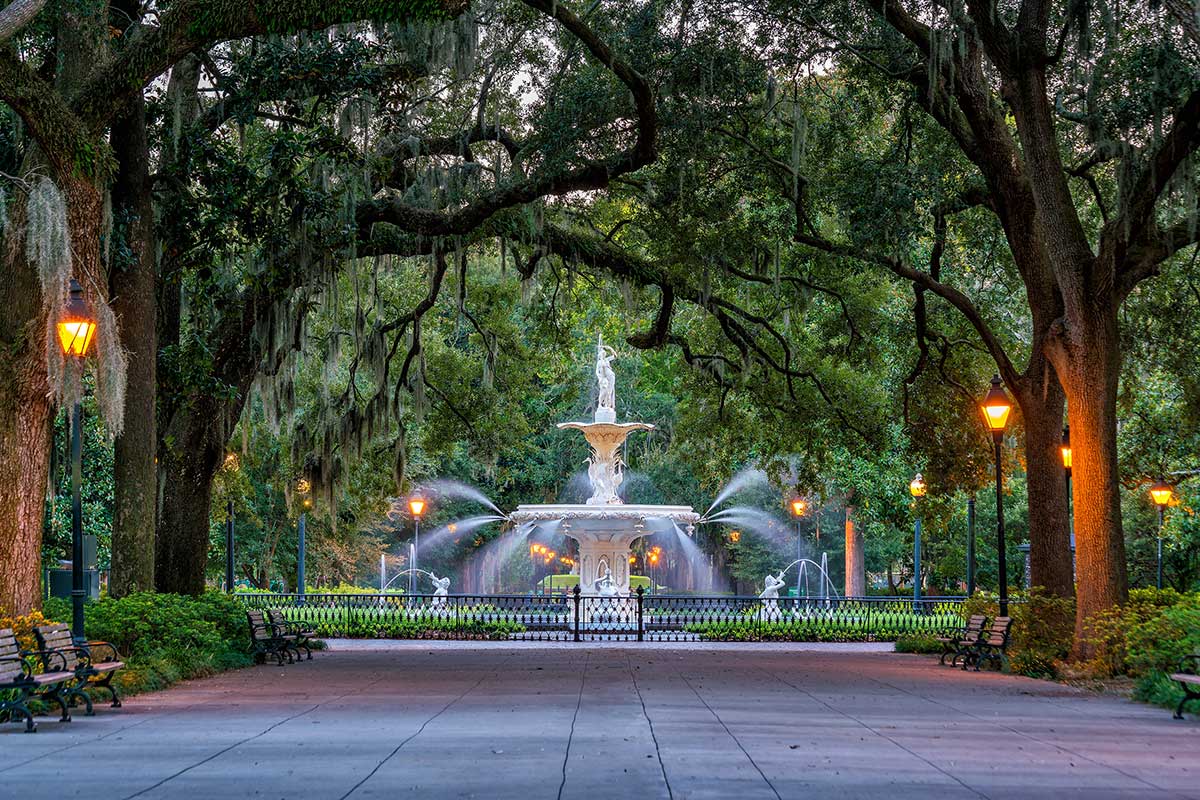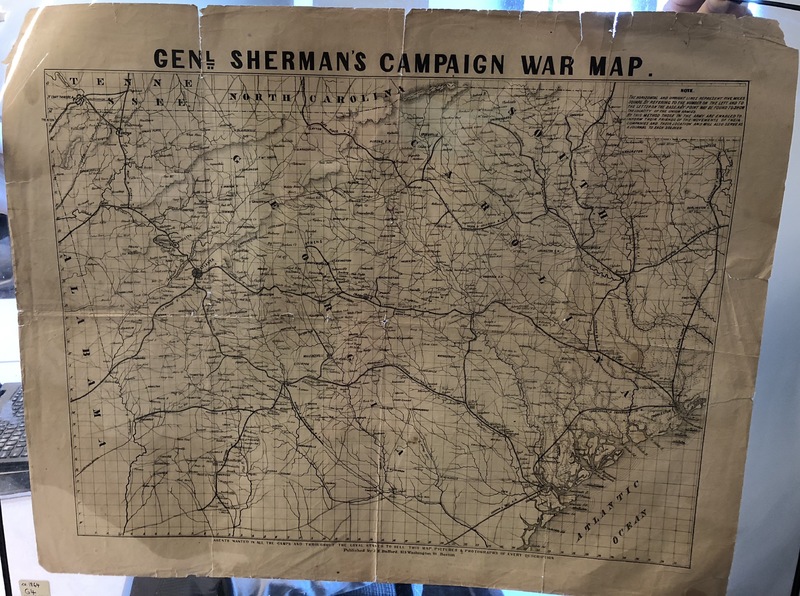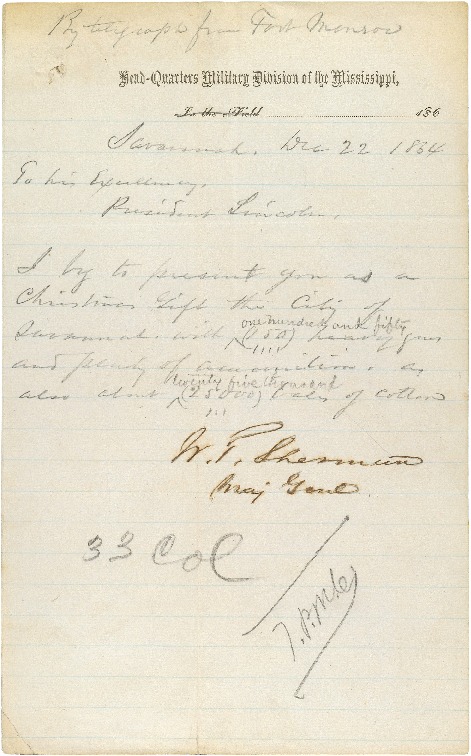General Sherman in the Civil War
April 12, 1861 is when the Civil War officially started, after the Confederates fired on Fort Sumter in Charleston, South Carolina (Taylor). Savannah, Georgia was part of the Confederate States of America and in March of 1861, Alexander H. Stephens gave his famous Cornerstone Speech there. This speech essentially established what the Confederates were fighting for and explained that the “cornerstone” the Confederacy was founded on was based on the idea that African Americans were subordinate to Whites and the slavery was a natural thing (Allen). On the other side of the war, General William Sherman served under President Lincoln for the Union forces working to end slavery, and during the winter of 1864 led a 60,000 man army from Atlanta to Savannah in a “March to the Sea.” Sherman and his men marched 285 miles obliterating everything in their path. They burned bridges and barns and destroyed all provisions they came across and fought against anyone who fought back. In Sherman’s words, they needed to make the Southerners “feel the hard hand of war” (History). Using the campaign map, Sherman was able to keep track of defenses surrounding major towns as well as the coast. Confederate prisons were also depicted, along with simple topographic elements such as towns, railroads, and waterways. Their goal of this mission was to deplete Confederate provisions and weaken the morale of the white southerners, a goal that was easily met. While Sherman’s March to the Sea had been successful, it was also seen as one of the “cruelest campaigns of the war” (Onion). It was a “campaign of fear” (Onion) that severed Confederate lines of supply and communication and as seen in the map covered almost the entire longitude of Georgia.
Works Cited
Allen, Jonathan R. “The Civil War.” Alexander Stephens, www.nellaware.com/blog/alexander-stephens.html.
Buford, John Henry. Gen. Sherman’s Campaign War Map. Map. [ca. 1:670,000]. Boston: s.n., 1864. Print.
History.com Editors. “Sherman's March to the Sea.” History.com, A&E Television Networks, 22 Feb. 2010, www.history.com/topics/american-civil-war/shermans-march.
Onion, Rebecca. “General Sherman's Christmas Gift for Lincoln.” Slate Magazine, The Vault, 20 Dec. 2012, www.slate.com/blogs/the_vault/2012/12/20/william_tecumseh_sherman_s_gift_for_abraham_lincoln_1864_telegram_presenting.html.
Taylor, Col. Samuel. “Georgia and the Civil War.” Georgia and the Civil War, www.ourgeorgiahistory.com/history101/gahistory07.html.
Upon their arrival in Savannah, Georgia, Sherman and his troops found a vacated city. Preparing for the attack, the city had been fortified and defended by 10,000 Confederate soldiers, led by rebel general William Hardee (History). Instead of going after Sherman, Hardee waited ten days for the Union army to unleash their plan of attack. However, realizing the destruction that was to come to him and his army, Hardee and his men fled Savannah, deciding to save the battle for another day, leaving the city of Savannah for the taking. While Sherman and his army did not fight against and destroy towns themselves, they “stole food and livestock and burned the houses and barns of people who tried to fight back” (History). This resulted in a more personalized war campaign because it specifically targeted rebellious people and their fighting spirit. By the end of the march, they had left a wake of terror and destruction. Because Sherman and his men had finally made it to the sea, they left the city untouched and instead presented it as a Christmas present to President Abraham Lincoln. Sherman sent a telegram to Lincoln that, along with the city itself, gave up to the president 25,000 bales of cotton, 150 heavy guns, and plenty of ammunition (Onion). This telegram was a relief to Lincoln, who had not heard from Sherman since the general and his troops had left Atlanta (Onion). The Christmas gift was welcomed with open arms, as it meant that the Civil War was getting closer to a Union victory, and in fact the White House celebrated this news with a 300 gun salute (Phifer).
Works Cited
History.com Editors. “Sherman Arrives in Front of Savannah.” History.com, A&E Television Networks, 13 Nov. 2009, www.history.com/this-day-in-history/sherman-arrives-in-front-of-savannah.
Onion, Rebecca. “General Sherman's Christmas Gift for Lincoln.” Slate Magazine, The Vault, 20 Dec. 2012, www.slate.com/blogs/the_vault/2012/12/20/william_tecumseh_sherman_s_gift_for_abraham_lincoln_1864_telegram_presenting.html.
Phifer, Evan. “President Lincoln's Christmas Gift, 1864.” WHHA, www.whitehousehistory.org/president-lincolns-christmas-gift-1864.


